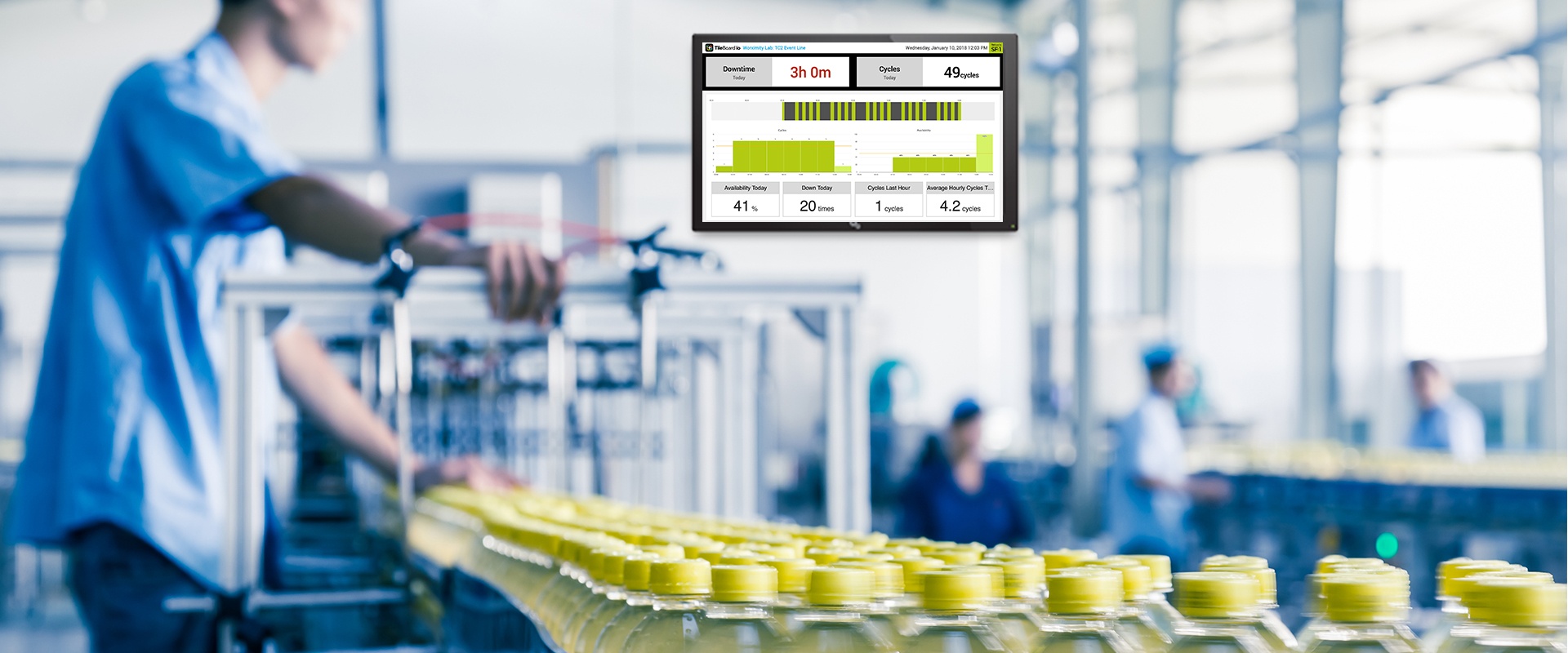Success or failure can be a matter of millimeters in manufacturing. Businesses wanting to stay on the side of success need to be efficient. Today’s leading food and beverage processors stay efficient by monitoring their facilities’ overall equipment effectiveness (OEE). This information helps supervisors both assess their level of current production and identify areas to improve operations.
Combining availability, performance, and quality, OEE is one of the most valuable measurement tools in a production manager’s tool kit. Like any measurement tool, the more precise and accurate, the better. But OEE in the manufacturing industry is often measured with manual processes—and that’s where things can go wrong.
Most manual processes can’t achieve the consistency and reliability you need. Digital tools can do it, and there is plenty of data to support bringing in these emerging technologies.
By switching your processes from manual to digital, you could see sudden improvements to facility-wide interconnectivity, data collection, and analytics—all keeping your production line on point and ahead of the competition.
Manual Processes Produce Incomplete Data
Manufacturers that rely on manual processes just can’t get a full view of their business. It’s like looking at a 500-piece jigsaw puzzle that’s missing 100 pieces; you’ll get a general sense of what is happening, but key information is missing.
Think about all the ways data gets collected on your factory floor and how much is dependent on a human workforce. Ask yourself:
- How many recording errors do we have to go back and correct later?
- How are delays in reporting affecting our production speed, product quotas, and delivery deadlines?
- How many staff hours are required and wasted on tasks we could be doing digitally?
- How much more data could we get if we weren’t limited by what a human workforce can monitor?
- How costly has it been to regularly train staff to do these operations?
The downside of manually collected data is that you’re always missing something. Without the full picture, you just can’t expect to make the best possible decisions.
Calculating a Food Manufacturer’s Optimal OEE Value
Plant-wide OEE values can help you and your team make better decisions. There are cross-industry standards currently being used to guide and monitor performance.
The OEE calculation is expressed as: OEE = availability x efficiency x quality
The variables used are:
- Availability = actual operating time/planned production time
- Efficiency = ideal cycle time/(operating time/total number good pieces)
- Quality = good pieces/total theoretical pieces
Once calculated, your OEE value reveals where your business stands and how far it is from achieving perfect production:
- An OEE value of 100 percent is considered perfect production
- A value of 85 percent reflects equipment operating at a world-class level
- Levels of OEE at 60 percent are considered to be typical
- An OEE value of 40 percent is considered low but not uncommon
OEE in the manufacturing industry can vary, but many Worximity clients have found comparing operations from period to period to be an excellent way to monitor ongoing performance and identify opportunities for improvement. You can use these guidelines to create achievable short-term and long-term goals in your facility.
You Need Digital Tools to Measure OEE in the Manufacturing Industry
Planned or unplanned downtime is something most manufacturers understand. What gets missed are the many smaller stoppages that can pile up over time and drain much-needed resources. Small stops—or micro-stops—are any pauses in production that aren’t long enough to be given a reason by the operator. The precision of digital data collection can catch the micro-stops that manual processes may miss.
Consider adding the following tools and technologies to your operation:
- Industrial Internet of Things (IIoT)
- Downtime Tracking
- Automatic Data Collection
- Real-Time Dashboard
- Continuous Improvement Solutions
When your factory works off of accurate data, you’ll see immediate improvements in production performance, and your entire operation will become more efficient.
Smart Factory Analytics Can Improve OEE in the Manufacturing Industry
With support for digital manufacturing at the highest it has ever been, now is the time for your team to get started. Improving OEE in the manufacturing industry won’t happen overnight. Worximity’s Smart Factory analytics system can help position your business to be on the forefront of a technology-driven and data-centric next decade.
When your team connects with us for a 30-minute demo introduction, you’ll learn how to:
- Implement Smart Sensors to collect real-time data across your production line
- Store production data in the cloud for immediate visualization and future reporting
- Rely on accurate, up-to-date, and easy-to-use data in your decision-making
- Combine our Plan-Do-Check-Act technology with best practices and your own expertise
















